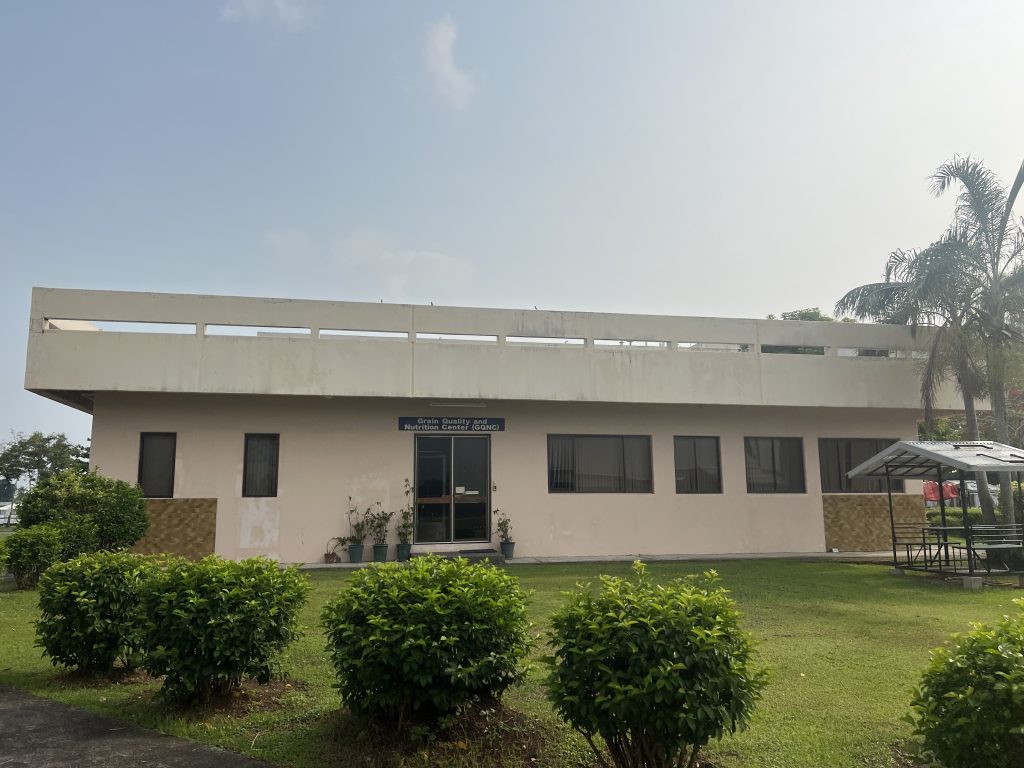Instead of sleeping in after a long journey, the other interns and I woke up early in the morning to walk to South Supermarket, which was around 20 minutes away, to buy a few essentials. Later on, we found out that there is a free IRRI shuttle bus that can take us there, but we enjoyed the walk although it started raining on the way back. When I was still in Bloomington, I looked at the weather forecast in Los Baños and got a bit discouraged as I saw it was supposed to rain everyday. However, it only rains for 5-10 minutes, and then there is sunshine or clouds the rest of the day. The weather is very humid and a little warmer than what we are used to, but we will adjust to it over time, hopefully! The highs are usually around the upper 80’s to lower 90’s while the lows are around the upper 70’s – very consistent unlike Illinois weather.
In the afternoon, we had an interactive orientation about common Filipino phrases such as “kamusta ka” (how are you) and “ako po ay si…” (my name is…). Many Filipinos add “po” to the end of their sentences to show respect. For example, when saying thank you, you can say “salamat po.” During the orientation, we got to try buko pie which is a speciality in Los Baños. It is a soft, flaky pie made from coconut meat with a creamy filling. Then, we went to a restaurant named Kamayan where you traditionally eat with your hands. All the seating areas were on top of water, and they had a buffet where all the food was on banana leaves. We tried fresh tilapia, various noodles, adobo chicken (their national dish), halo-halo (shaved ice with ice cream, milk, leche flan, purple yam jam, sweetened beans, fruits, jellies), and more.

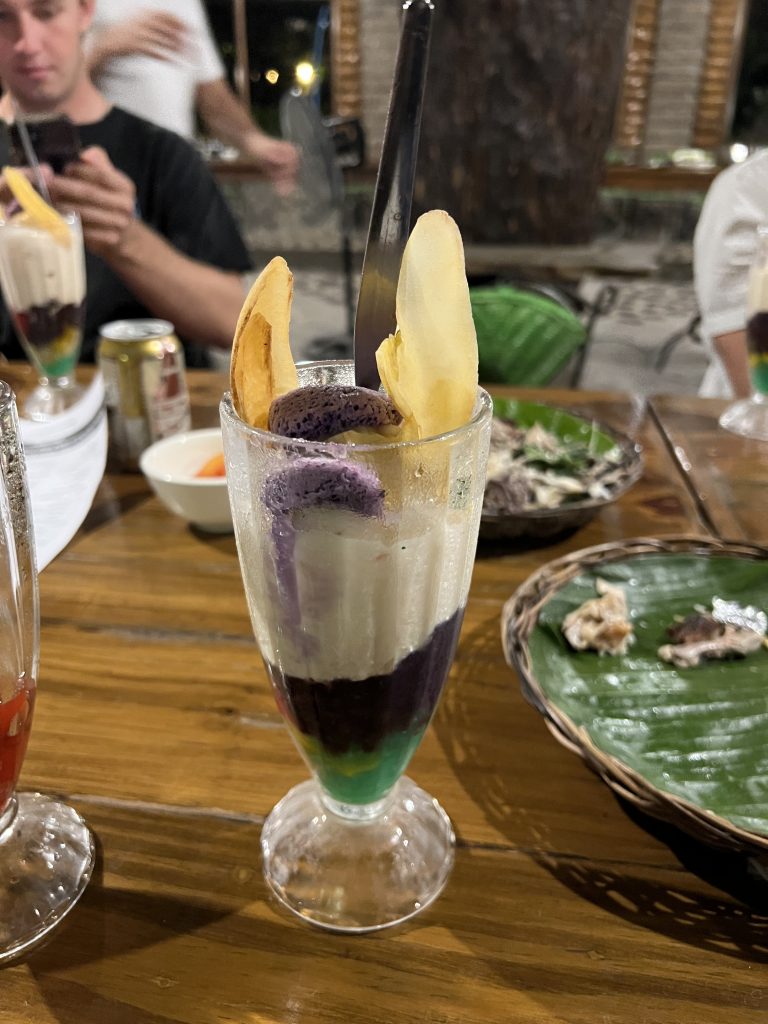
The next day, we had another orientation, but it was just for IRRI interns. Kuya Froilan, the person in charge of coordinating these internships, gave us a brief orientation about IRRI’s facilities as well as a tour of Los Baños through a reserved shuttle bus. We got to see Laguna Lake, which is the largest lake in the Philippines. We also got to buy some fresh fruit from a local vendor.
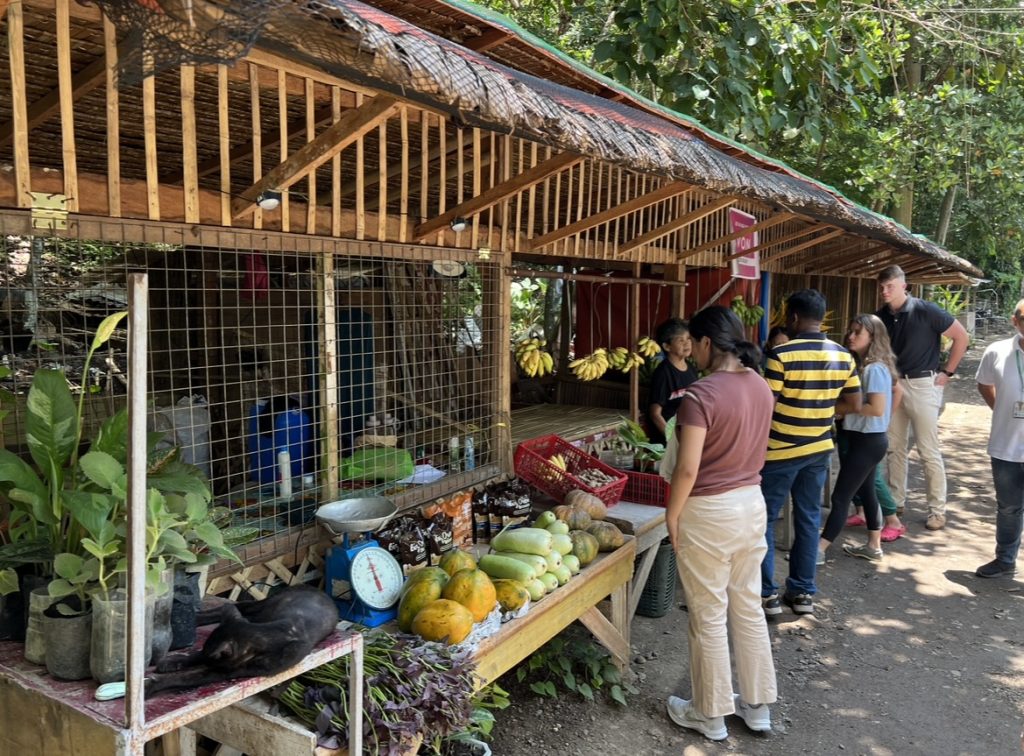
IRRI is a part of the campus of the University of the Philippines Los Baños (UPLB). It has a lot of nice facilities such as spacious dorms with a balcony and our own bathroom, a gym with a free trainer, cafeterias close to the dorm/research buildings, a souvenir shop, cafe, the Rice World Museum, and many more. The other IWU interns and I have already played lots of ping pong and volleyball at the gym – we will definitely be very active this trip! The cafeteria is located in the same building as our dorm, Harrar Hall, and it runs from 7 to 7. An average meal costs 100-300 pesos which is just around $2-4 (1 USD = 55.90 PHP), and they have a good selection of options everyday. Plus the food is delicious, Masarap!
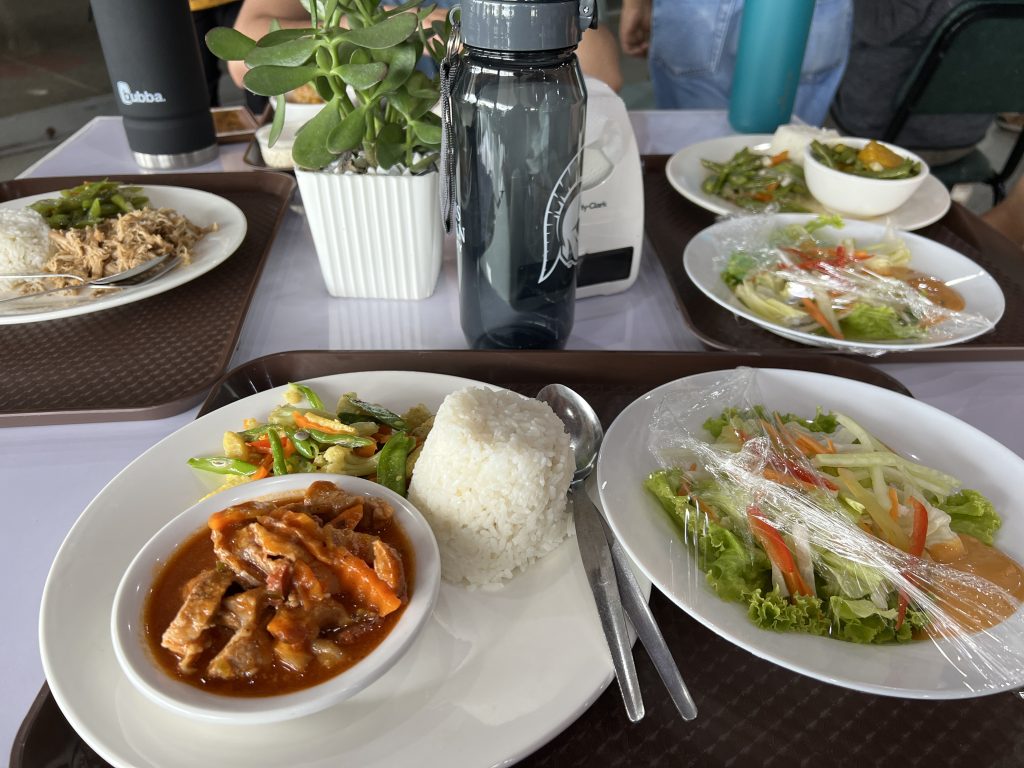
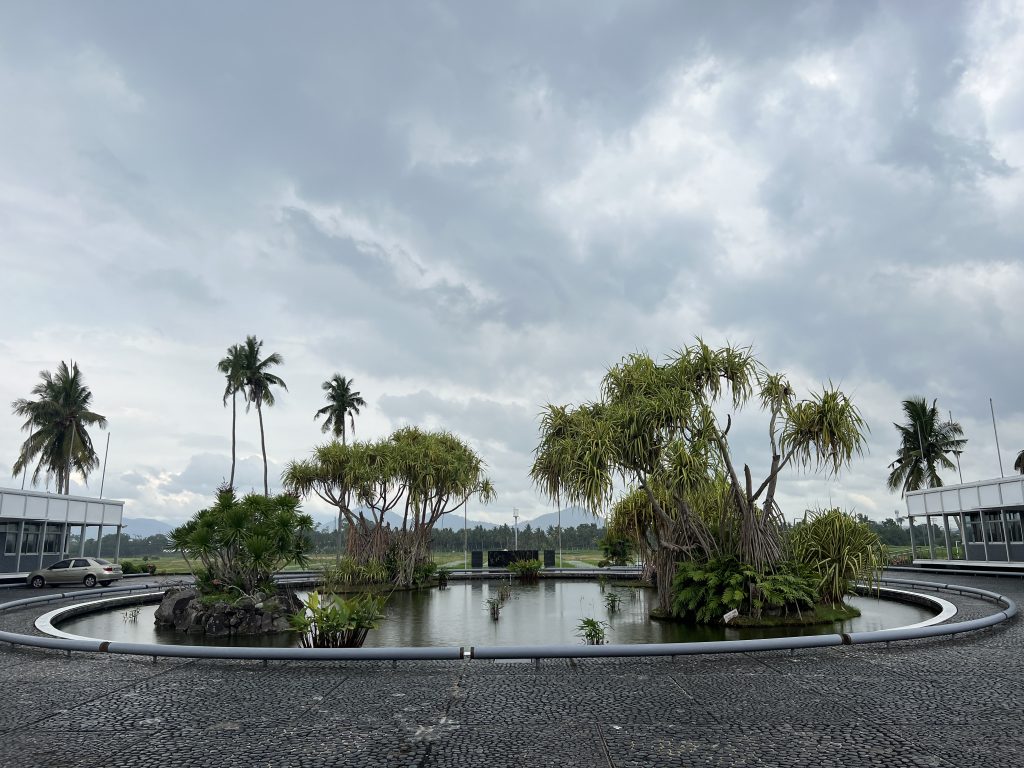
While most of us know Los Baños to mean “the bathrooms” in Spanish, it also means “the baths.” Back when the Philippines was owned by Spain, many Spaniards were attracted to the therapeutic effects of the hot springs near Mount Makiling, a dormant volcano. Therefore, Pedro Bautista changed its name from Mainit (hot) to Los Baños. Jet lag didn’t stop us from exploring this city right away! On our second full day, before we figured out that the shuttle bus drops us off at different gates closer to the main parts of the city, we walked around 30 to 45 minutes to see the other places nearby. Everything is alongside the main road called Lopez Avenue. We scouted out a few places for future adventures, and then we went to Robinsons, which is a 3-level mall filled with retail outlets and fast food chains. We ate dinner there and browsed through some stores. Throughout our first week, we went to other stores like Los Baños Centtromall, and we also ate at restaurants such as Seoul Kitchen, Dalcielo, and Bonitos. Whenever we walk around the streets, everyone turns to look at us. I am not used to being seen as a foreigner but that is part of the package when exploring a new country!
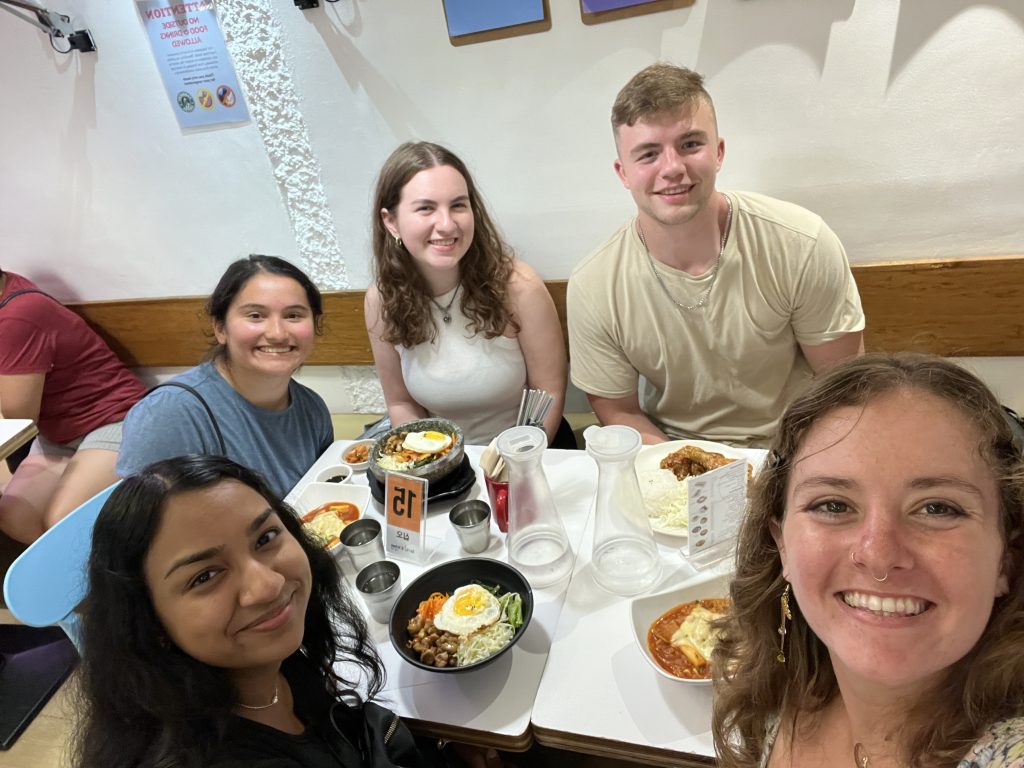
Every Saturday morning, there is a bazaar nearby. Vendors set up booths near UPLB Freedom Park and sell snacks, drinks, and mini gifts. After buying a few things, we walked through the UPLB campus and continued to explore more of Los Baños. That day was also Hannah’s birthday so we did some karaoke and had a fun night together!
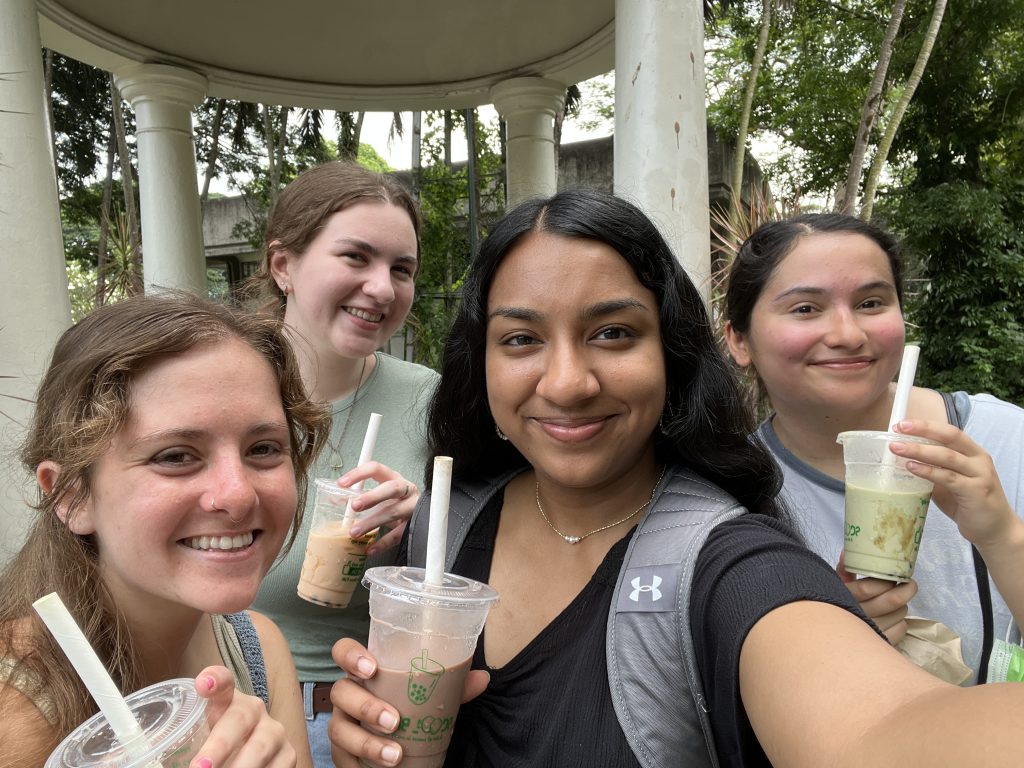
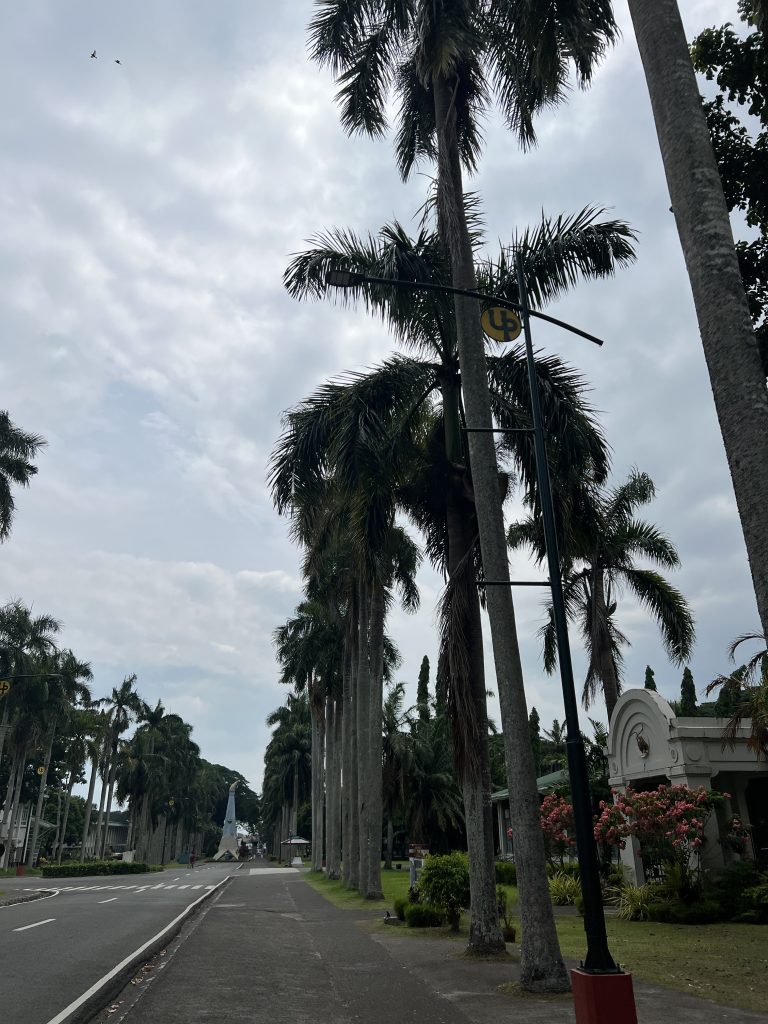
As for the main reason I am in the Philippines, I also started my internship this week. On Wednesday, June 7th, I met with Dr. Nese Sreenivasulu who is the head researcher of the Consumer-driven Grain Quality and Nutrition Center (CdGQNC or just GQ). We discussed my previous research experience as well as his goals for me for the next 2 months. I will be helping a PhD student named Ate Adzra with her experiments. To begin with, I analyzed the glycemic index (GI) of different rice. GI is a measure of how quickly a carbohydrate can raise your blood glucose level. A high GI indicates that your blood sugar will spike immediately. A low GI indicates that the carbohydrates will break down more slowly, resulting in the gradual release of glucose into your bloodstream.
Rice is a staple for over half of the world population. Unfortunately, most rice varieties tend to have a higher GI level compared to other starchy foods. Examples of high GI rice include Japanese sushi rice and Jasmine rice while Basmati rice and pigmented rice have a lower GI. Many of the top rice-consuming countries such as China and India also have a high rate of type 2 diabetes. Studying GI is essential because lower GI foods can help manage and control your blood glucose levels. Efforts are being made to create low to moderate GI rice lines through genetic manipulations and also to promote a well-balanced diet with other low GI foods.
During my first week, I received a brief orientation of the lab and spent most of my time reading papers. On Friday, I assisted another Filipino intern named Jazz to perform an experiment that replicates the human digestive system to calculate the GI of a mapping population. IRRI breeds multiple rice lines that can create 200+ offspring, collectively known as a mapping population. One run of the GI experiment takes a few hours to set everything up, cook the rice, wait for the rice to “digest” using enzymes like amylase and pepsin, incubating the samples, and finally take the absorbance readings using a UV/vis spectrometer to calculate the GI value (I will dive into more details in future weeks). Next week, I will not be in the lab because the other researchers will be presenting their mid-year updates in front of our research cluster. Afterwards, I will determine more phenotypes such as the resistant starch and digestible carbohydrate values of more mapping populations.
